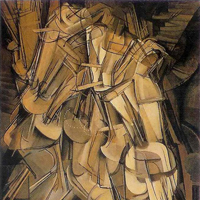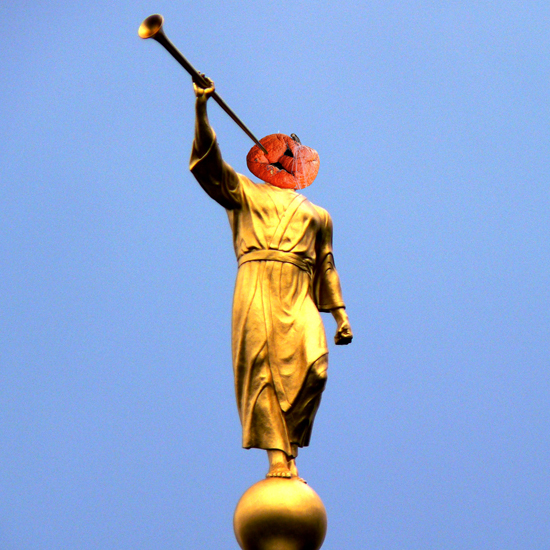
I’ve been hearing a lot about “God’s Law” in my local congregation, recently. Particularly the tune that “God’s law doesn’t change”—being sung with the conviction that if it were only 1980, again, all would be well. The motif is a piece of the deeply suspect scheme of the few, who are hopelessly stuck to the past, to make the many live there with them.
Respectfully, we have no idea whether god’s law changes, because we have no idea what god’s law is. All we know are forms, and forms absolutely do change.
God’s law, at one time, was expressed in the form we now read in the Books of Moses. God’s law took shape, back then, in a literary form that came into being in a particular place and time and among particular people. Like other art forms, that shape of the law had precedent and predecessors, but pushed against those bounds in a zeal to be new.
That literary form worked at one time, but art always seeks some crack through which to flow, to work better towards its goal of clarity, and some communities down the road went hunting for some new form in which god’s law might manifest, newly in a time that had become new. The consequence was the Christian gospels, as John Dixon points out in his essay “A Way Into Matter”.* A new art form made possible a new manifestation of god’s law, decidedly changed even while the form affirmed its lineage.
Because god’s law is contingent on forms that ever-morph, we cannot escape at least two conclusions: 1) here, in the existence we share, god’s law changes all the time, and 2) it turns out that art really does matter.
No form, no word. No word, no law. And forms and words change. Ipso facto…
God’s law is always contingent. Divine law is always mediated in some form, and divine law is tied, dependently, to the form—most often the creative, artistic language—that articulates it.
Our longing for experience of divinity or of something that somehow escapes the bounds of the quotidian motivates the creation of forms that might enable that experience. Art is that thing that keeps generating forms that challenge, confront, abrade, and surprise as they work so very hard to get us out of bounds. Without art, the infinite god would be stuck outside existence. The paradox, with which art is peculiarly suited to grapple, is that every new form shows us new bounds.
Form, in its turn, determines the nature of experience. A form-less experience is an oxymoron. We can hope for some purely unmediated experience, but we would never know such an experience, if we had it. What we know is not extricable from how we know, and all the how that we know is right here, with us, in the bounded world.
God’s law, we can’t deny, is embedded in those shifting shards of form and experience that comprise being’s turning kaleidoscope, unless we simply can’t know the law at all—in which case we needn’t keep on talking about it.
If we’re going to talk god and law, we need something other than unexamined, unreflective, uninspired declarations that god’s law doesn’t change. We need theology—another art form, which, when it is clear-eyed and honest, accommodates itself to its place in being’s inescapable flow. Expressed essentially in words, theology knows it cannot escape form. But knowing itself, as a form, as an art, theology can press and shape itself over and through time to accommodate the experience of the divine even as conditions and experience must change. At one time Tertullian, at another Aquinas, and then Kierkegaard, and then Tillich. Form renews itself and makes things new and, thus, keeps abreast of the possibility of seeing god and knowing the law, in an ongoing way, whatever the circumstance.
(Theology is not only historically contingent, but culturally contingent, as all art forms are. Which is why god’s law is in the Puranas, but not everyone can see it. That don’t look like anyone on a staircase, Ethyl, says Elwood, on his grumpy walk through the Philadelphia Museum of Art. I don’t know, Elwood, Ethyl replies, knitting her fingers, The sign says it’s “Nude Descending a Staircase”. This is the hopeful promise of theology. A person like Elwood might learn how to see god and law in things in which they seem, at first, not to show up. But, of course, only if Elwood were at least a little interested in learning.)
The forms, by which god’s law—whatever that might be—changes, change so much, so frequently, and so fluidly, we might as well say that “God’s Law Is Change”. The efforts to freeze the form—the words—in which god’s law appears in the world produce only dogma. And the nasty, teeth-clenching, aggression of dogma that tries to obscure its meanness in a solemn authority is not only hopeless, since everything about the great finitude we inhabit flows and shifts, but can lead to nothing but stagnant, damned unhappiness.
At least, if there is any divine promise—call it law, if you must—for any of us, it must be change. Eternal change.
______________________
*In Art and Religion as Communication, edited by James Waddell and F. W. Dillistone.











